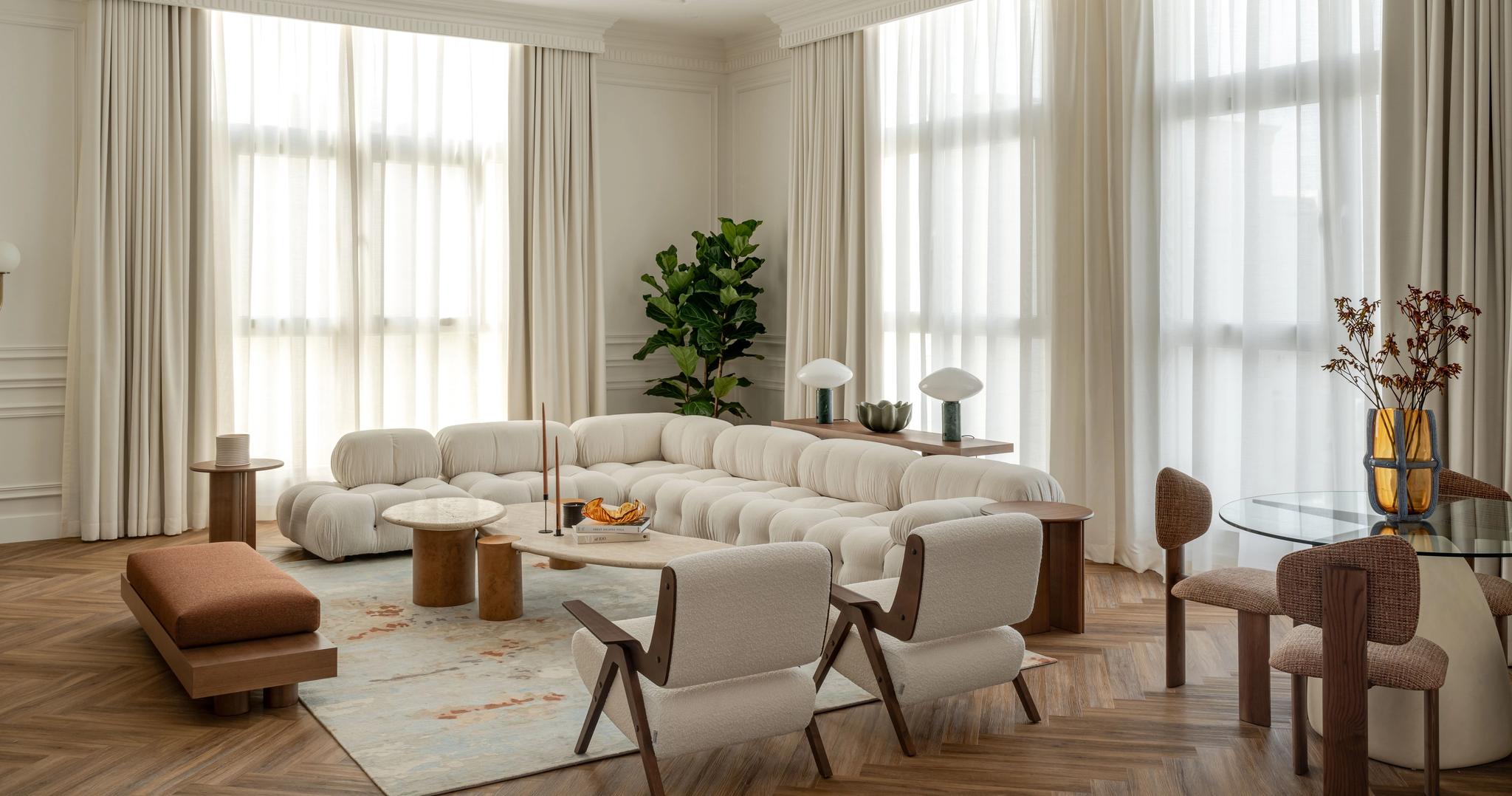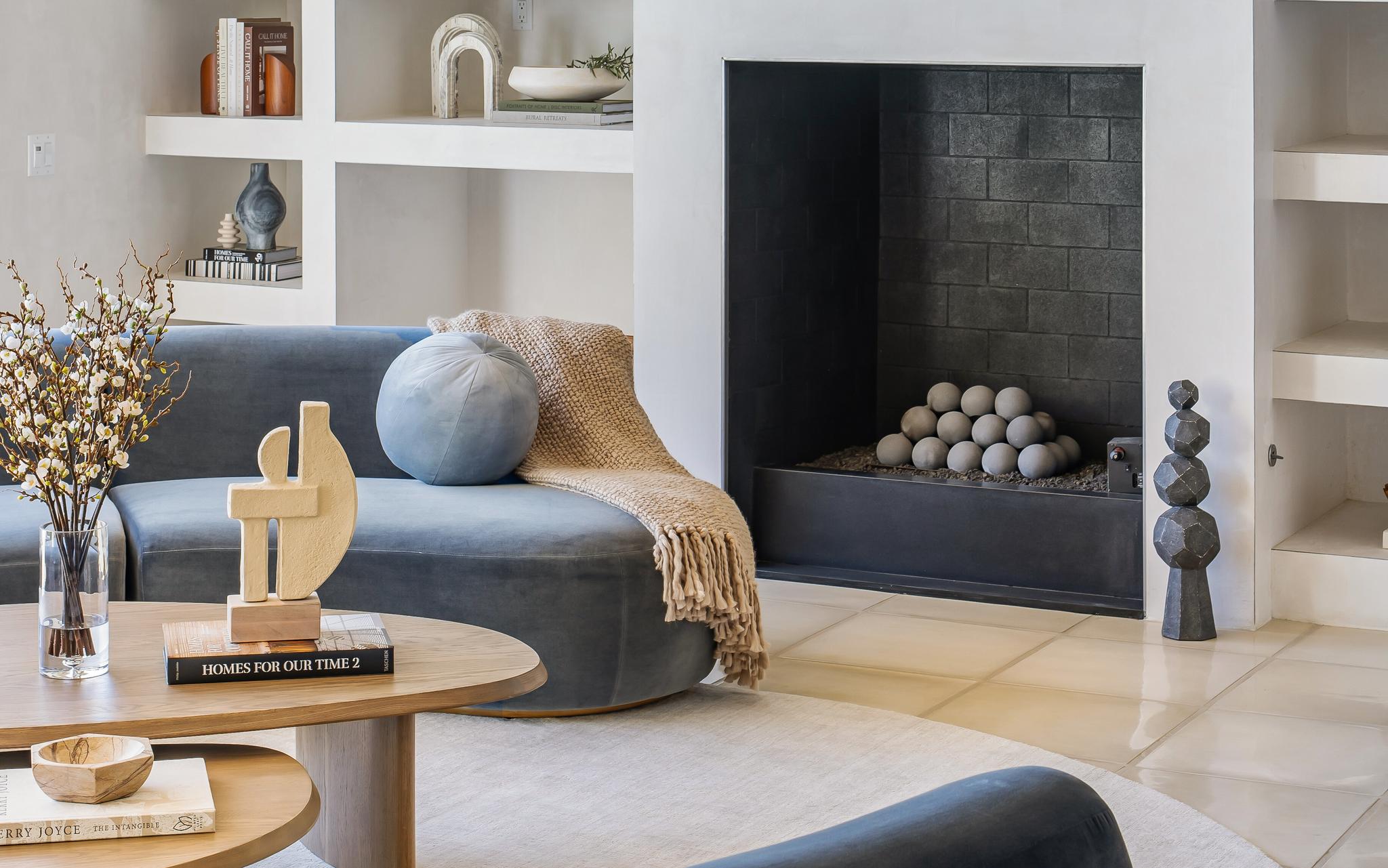
Suzenne Lounge Chair by Chiara Andreatti
USD 5,505
Ships in 5-6 weeks

Mexico City-born and New York-based architect, Juan Carretero, made traveling his trademark. Fascinated by the way geography and social changes influence architectural taste, he believes in the transformative power of design to question the status quo - pushing the boundaries of traditional aesthetics towards joyful experimentation.
New York-based designer Juan Carretero is the founder of Capital C Interiors, an award-winning studio known for its warm and witty approach to design. After studying architecture and interior design in Australia, Mexico and the United States, he has kept his globetrotting spirit and worked in different countries, which has given him a deep appreciation for local craftsmanship and tradition. His versatile projects range from residential to commercial for international clients, designing spaces that look lived-in and collected yet are carefully composed. His rooms usually evoke a collected, polished and refined aura inspired by his own international background.
How did you first become involved in the world of design? Tell us your story.
Since I was a child growing up in Mexico City, I was always surrounded by interesting design and instinctively aware of it. My parents were both frustrated architects and we moved a few times into homes designed for them, so blueprints were part of my landscape since I can remember. I was also a very visual and artsy kid. I used to draw a lot. My parents also had the travel bug so from an early age I was fortunate to visit places that opened my mind to the concepts of beauty and function. I always knew I would be an architect.
Good light is incredibly important. It can highlight, enhance, elevate and transform. It can even heal. Never too much, always almost too little.
Where do you draw inspiration for your projects?
Traveling is by far the most provocative source for inspiration. When you travel, not only are you exposed to whats different but your mind is open and relaxed to take it all in. We have been very lucky to work in places like Spain, Colombia, Scotland, Germany and of course, Mexico. It’s always wonderful and humbling to fully immerse oneself in the customs and traditions of each culture. I also love to look at old interior design magazines and to see what remains current. I tend to draw lessons everywhere I go and analyze how the media, nostalgia, cultural backgrounds, geography or socioeconomic factors can influence our taste. Being a designer involves having an acute sense of self and a willingness to question the status quo.
What is the essential element to address when designing a space?
Good light, both natural and artificial, is incredibly important. Crucial, I would say. Nothing good survives under the wrong light. The right kind of illumination can highlight, enhance, elevate and transform. It can even heal. Never too much, always almost too little.
How do you frame the creative process and the development of a project?
It's all about the space and the client. As an architect, the bones need to be right, or if not, at least you need to be able to trick your eye into thinking that they are. Designers use visual tricks to improve the proportions, the light and the overall feel of a room. What is this room calling for is the first question; the answer largely depends on the clients needs and personality. I like getting to know them well before proposing anything. It's easy to forget we design for them, not for ourselves.
Do you have an interior design master that you look up to?
Albert Hadley, David Hicks, Billy Baldwin, Jean-Michel Frank, Arturo Pani, Luis Ramiro Barragán are at the top of my list. All different styles but their legacy has left us with incredibly important lessons.
What's your favorite project you worked on?
For Holiday House, which is an annual top designer show house in New York we imagined Tom Ford as our client for a very masculine, sexy and tailored junior master suite in a townhouse on Sullivan Street in SoHo. We took some of his staple design concepts and used them as inspiration to recreate a room that felt very much like his luxury fashion brand. Rich and soft textures in dark colors, a mix of old and new furniture and the most luxurious Italian linens and carpets completed the look.

USD 5,505
Ships in 5-6 weeks

USD 2,910
Ships in 11-12 weeks

USD 680
Ships in 3-4 weeks

USD 325
Ships in 7-8 weeks

USD 1,535
Ships in 3-4 weeks

USD 1,135
Ships in 7-8 weeks

USD 15,130
Ships in 9-10 weeks

USD 115
Ships in 3-4 weeks

USD 21,900
Ships in 14-15 weeks

USD 40,675
Ships in 14-15 weeks

USD 3,065
Ships in 2-3 weeks

USD 9,845
Ships in 1 week

Drawing on a life lived across Pakistan, the Middle East, and China, Masoomeh brings a uniquely gl…

Claudia Afshar, founder of Claudia Afshar Design, is a globally recognized interior designer known…